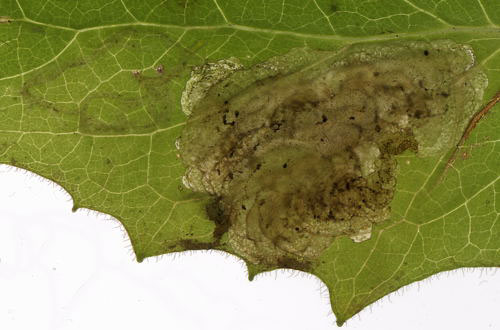|
||||||
| Liriomyza puella (Meigen, 1830) [Diptera: Agromyzidae] |
|||||||||||||||||||||||||||||||||||||||
|
Liriomyza puella (Meigen, 1830). |
|||||||||||||||||||||||||||||||||||||||
Larva: The larvae of flies are leg-less maggots without a head capsule (see examples). They never have thoracic or abdominal legs. They do not have chewing mouthparts, although they do have a characteristic cephalo-pharyngeal skeleton (see examples), usually visible internally through the body wall. Described by de Meijere (1925a) and Beiger (1960b, as mycelis); front spiraculum with 9, rear spiraculum with 3, equally sized, papillae (Bladmineerders van Europa). Puparium: The puparia of flies are formed within the hardened last larval skin or puparium and as a result sheaths enclosing head appendages, wings and legs are not visible externally (see examples). Described by Beiger (1960b, as mycelis) (Bladmineerders van Europa). Hosts in Great Britain and Ireland:
Hosts elsewhere:
Time of year - mines: June-July; August (British leafminers). Time of year - adults: Currently unknown. Distribution in Great Britain and Ireland: UK (Godfray, 2011), Norfolk (James Emerson, pers. com.) and Yorkshire (British leafminers). Distribution elsewhere: From Sweden to the Iberian Peninsula and Austria, and from France to Poland (Fauna Europaea, 2008); also Britain (Godfray, 2011a), Slovenia (Maček, 1999a) and Bulgaria (Buhr, 1941b) (Bladmineerders van Europa) NBN Atlas links to known host species:
British and Irish Parasitoids in Britain and elsewhere: Unknown. |
|||||||||||||||||||||||||||||||||||||||
|
|
|
| External links: | Search the internet: |
Biodiversity Heritage Library |
Find
using Google Find using Google Scholar Find images using Google |
| Last updated 13-May-2018 Brian Pitkin | ||

